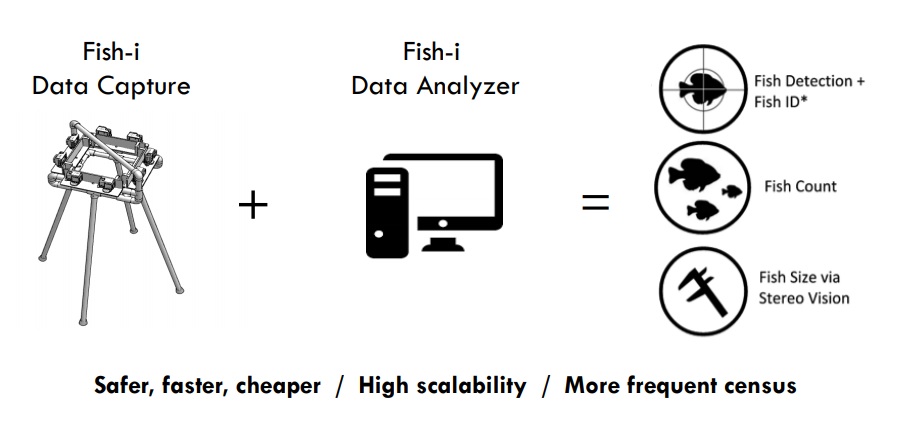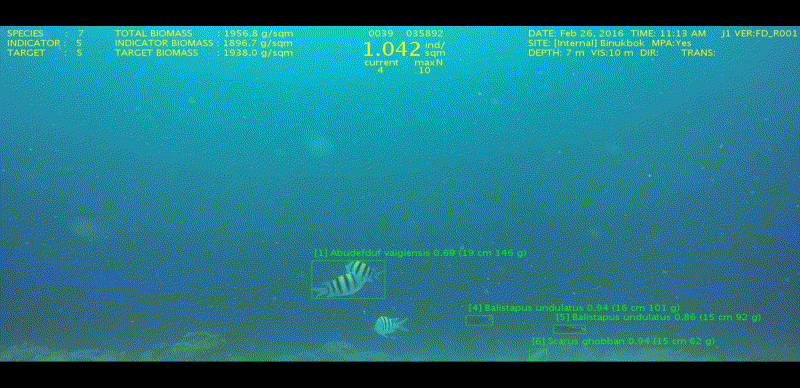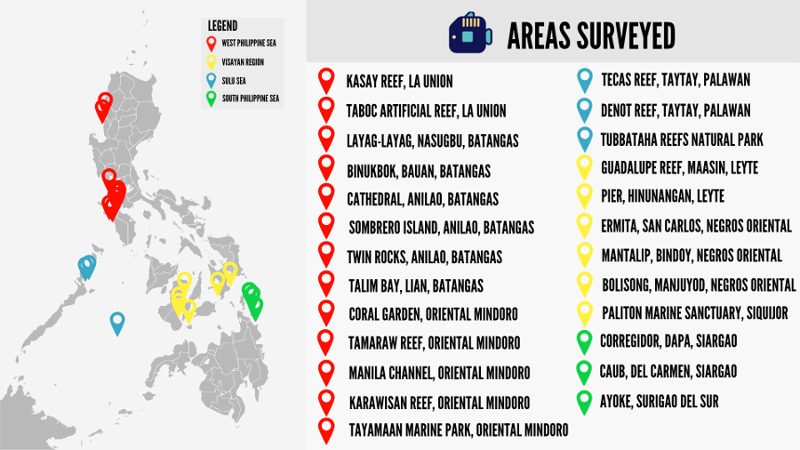Underwater Visual Census
Fish species count, population density and biomass are crucial variables for assessing the health of a tropical marine environment. Underwater Visual Census (UVC) conducted with reef areas measure these variables to provide quantifiable metrics for determining the success of reef protection and rehabilitation initiatives. The monitoring results serve as inputs for the formulation of strategies for improving reef resilience and productivity of reef fish communities.
The Problem
UVC methods suffer from the following biases that tend to underestimate fish density measurements: fish behavioral response to diver’s presence (agitation or attraction), diver’s skill in accurately counting and identifying fish, and diver fatigue. Quite often the diver is burdened with the decision to include or exclude an individual fish as it moves into or away from the sample area. In difficult cases, the diver has to decide whether the fish was inside or outside the area when it was first sighted.
The Solution
The semi-automated fish population density, species identification and biomass estimation system from raw input underwater videos. Through this method, there is minimal disturbance in the water environment, thus greatly reducing observer bias. With Fish-I, even divers with minimal knowledge of fish can obtain high quality population and species distribution measurements using a stereo camera rig and fish video analyzer software that we have developed. A permanent visual record of the census is available for later review and archiving.


